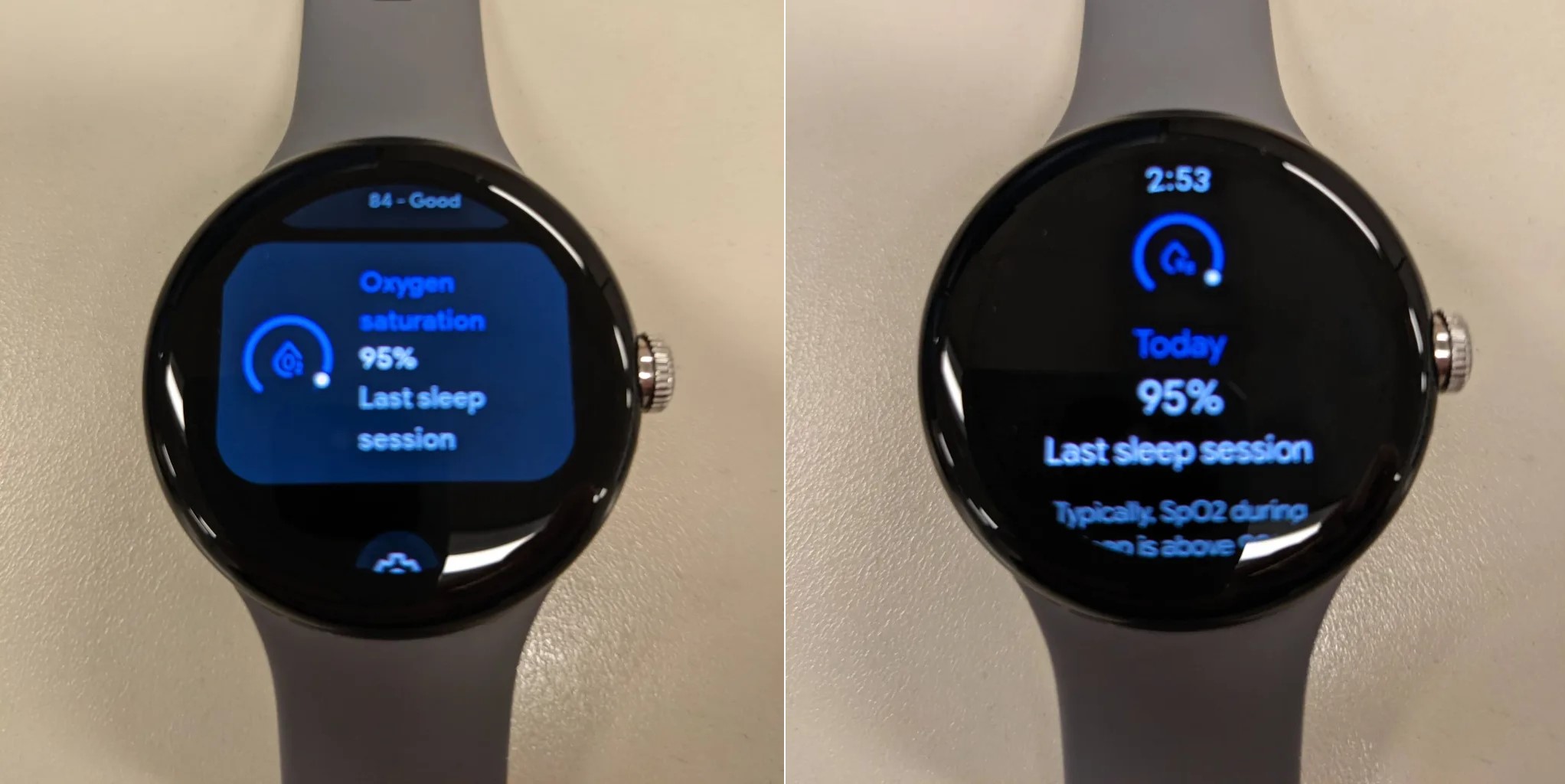Pixel Watch’s unused sensor is coming to life
It looks like the Google Pixel Watch is finally set to reach its full potential.
Since launch, Google’s first wearable has been capable of tracking blood oxygen saturation (SpO2) measurements from your wrist, but strangely the feature was disabled. Some say it was because Google was waiting for FDA approval, but that’s not strictly necessary: The Apple Watch’s Blood Oxygen app went live without, after all.
Whatever the reasoning, it looks like Google may finally be ready to enable the feature for all, as a handful of Reddit users spotted overnight SpO2 readings on the on-device “Fitbit Today” app.
As the screenshots below show, the data appears underneath at the bottom of the feed, with a percentage score for the “last sleep session.” Tapping it gives a full-screen explanation of what it means, as shown in the second picture.

Previously, the Pixel Watch would only provide an estimated oxygen variation (EOV) in the “Restoration” area. The fact that the Pixel Watch now seems to be recording an actual percentage figure suggests the feature is finally ready for showtime.
“I went back and looked at previous weeks and not a single data point,” wrote the discussion’s creator. “Wonder why mine showed up last night for the first time.”
But it hasn’t reached all wrists yet. The majority of users in the Reddit thread are yet to see any data recorded, though at least one other confirmed it appeared for them for the first time too.
With Reddit’s anonymity, it’s impossible to know why some users have it and others don’t. It might be that the feature is locked to geographical regions, but it’s more likely that Google is simply staggering the rollout to make sure it doesn’t break anything as it’s enabled.
What does an SpO2 sensor do?
SpO2 sensors are available on plenty of wearables and estimate the amount of oxygen in your blood, via a red and infrared light shined onto your skin. The way light is reflected back is used to estimate oxygen saturation levels.
A score of 95% and above is good, but anything above 92% is considered to be in the normal zone. Below that, and it may be time to get more tests and investigate further.
For wearables, the metric has a number of uses. Firstly, it’s often used as a handy measure when assessing sleep quality. And when it’s on while sleeping, it can also spot the signs of sleep apnea, which can cause health problems if left untreated.
Other medical conditions can also cause low blood oxygen levels, so sufferers of asthma, heart disease, pneumonia and others might welcome having a passive way of measuring it — even if it’s not regarded as accurate as measuring via a fingertip with a dedicated PulseOx monitor.
It’s also handy for athletes training at altitude, who will want to keep a close eye on their blood oxygen levels as they acclimatize.
Hopefully, all Google Pixel Watch wearers will be able to benefit from this extra data soon.
More from Tom’s Guide
For all the latest Technology News Click Here
For the latest news and updates, follow us on Google News.
